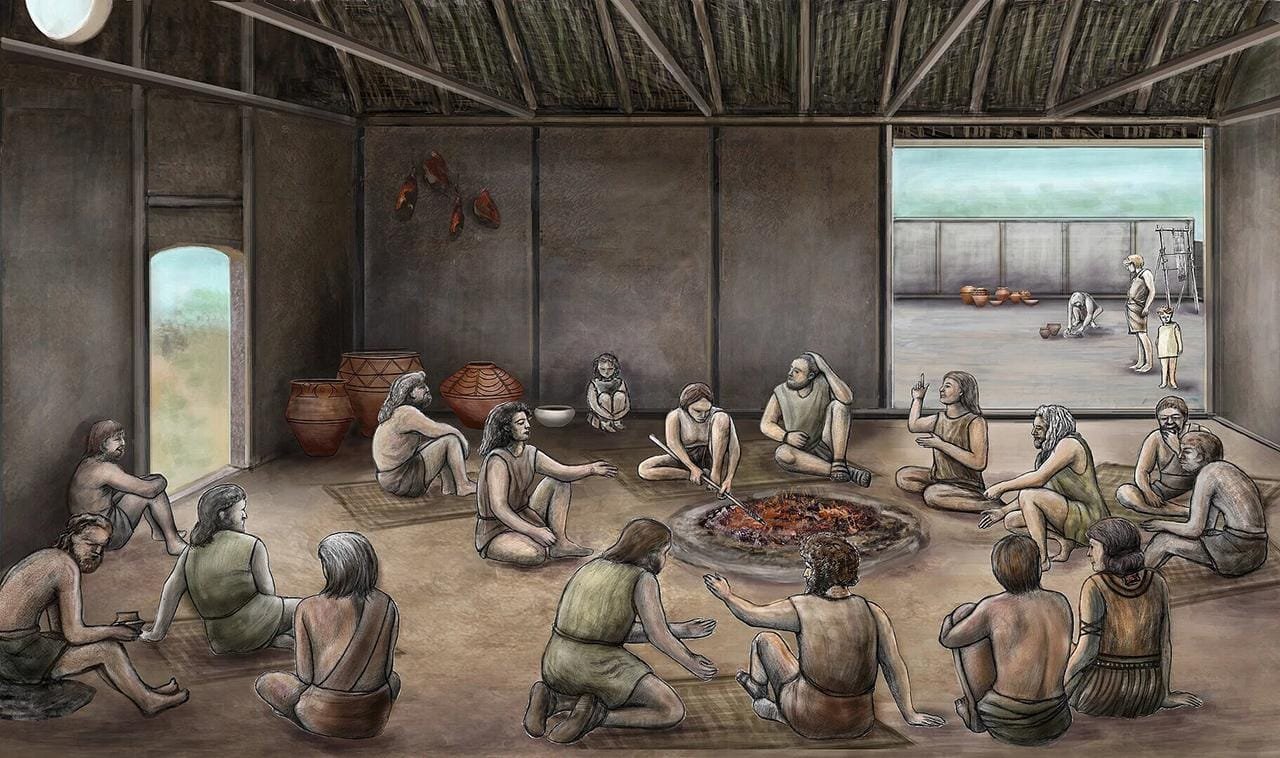A recent study by researchers from the ROOTS Cluster of Excellence at Kiel University has unveiled a novel method to explore ancient social dynamics and individual well-being through archaeology. By employing the “capability approach,” a philosophical framework developed by Indian economist and philosopher Amartya Sen, the study bridges the gap between ancient material remains and modern concepts like the United Nations Human Development Index (HDI). Published in the journal Open Archaeology, the research sheds new light on Europe’s first mega settlements, which existed around 7,000 to 5,000 years ago.
 Reconstruction drawing of a meeting scene in a Cucuteni-Trypillia settlement. In their heyday, these settlements were characterized by great social equality. Credit: Susanne Beyer / Kiel UniversityThe Capability Approach in Archaeology
Reconstruction drawing of a meeting scene in a Cucuteni-Trypillia settlement. In their heyday, these settlements were characterized by great social equality. Credit: Susanne Beyer / Kiel UniversityThe Capability Approach in Archaeology
The “capability approach” emphasizes that human well-being extends beyond material possessions to include opportunities and capabilities that enable individuals and communities to lead meaningful lives. While this concept underpins the HDI today, applying it to ancient societies presents challenges. “How can we use the static remains of material culture to reconstruct dimensions of the dynamic activity behind it?” asks co-author Dr. René Ohlrau.
To address this, the researchers devised a methodology to link HDI indicators—such as living standards and innovation capacity—to archaeological data. For instance, evidence of technological advancements, like new plow or loom designs, can reflect societal innovation, a key HDI dimension. “This is the first time we’ve successfully connected archaeological categories to those of the HDI, allowing us to relate the distant past to present-day concepts,” says Dr. Vesa Arponen, one of the authors.
Case Study: Cucuteni-Trypillia Mega Settlements
The study focused on the Cucuteni-Trypillia communities, which thrived between 5050 and 2950 BCE in what are now Romania, Moldova, and Ukraine. Known for their vast, circular settlements spanning up to 320 hectares and housing populations of up to 17,000, these societies represent Europe’s earliest examples of large-scale urban living.
During their peak, these settlements exhibited significant social equality and offered individuals ample opportunities for active participation in community life. Interestingly, the research challenges traditional explanations for their development, such as climate change or population pressures driving technological and political innovation. Instead, it posits that expanded opportunities for personal and communal fulfillment may have attracted more inhabitants, spurring both population growth and innovation. “Our results suggest that the dynamics of Cucuteni-Trypillia societies may have been driven by opportunities for self-realization rather than external pressures,” explains Dr. Arponen.
 An example of urban planning in the form of habitable concentric walls of the Cucuteni-Tripilia culture. Credit: Kenny Arne Lang Antonsen & Jimmy John Antonsen / Wikimedia Commons, CC BY-SA 4.0Expanding Archaeological Horizons
An example of urban planning in the form of habitable concentric walls of the Cucuteni-Tripilia culture. Credit: Kenny Arne Lang Antonsen & Jimmy John Antonsen / Wikimedia Commons, CC BY-SA 4.0Expanding Archaeological Horizons
The Cucuteni-Trypillia culture, which evolved from the Danubian Linear Pottery culture, is renowned for its unique practice of intentionally burning villages periodically. While typically described as proto-city-states, these communities also demonstrate an unusual degree of social equity during their peak. By applying the HDI framework, the study offers fresh perspectives on these societies.
The implications of this methodology extend far beyond the Cucuteni-Trypillia culture. The researchers plan to apply their approach to other archaeological contexts, fostering new discussions about the interpretation of ancient societies. “This tool not only opens doors to reinterpret past communities but also questions traditional patterns of explanation in archaeology,” says Dr. Arponen.
This innovative application of the HDI to archaeological findings illustrates how ancient societies can be analyzed through a modern lens, revealing parallels between the challenges of the past and contemporary human development.





